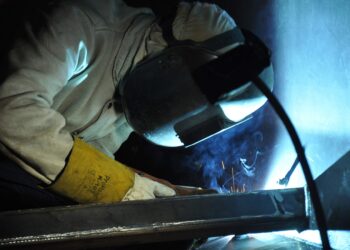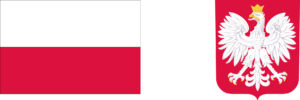In the shifting geopolitical landscape of Central Europe, Poland and Czechia have emerged as noteworthy examples of nations bolstering their defence capabilities through robust domestic arms production. This strategic pivot not only enhances national security but also serves as a barometer of economic vitality and technological advancement.
Poland, with a history of geopolitical tension and a keen sense of its security needs, has taken significant strides in augmenting its domestic arms industry. The country’s defence strategy, outlined in the „Technical Modernization Plan 2021-2035,” earmarks nearly $50 billion for the procurement and development of defence systems, a substantial portion of which is dedicated to domestic manufacturing. Poland’s focus has been on a broad spectrum of military hardware, from the upgrade of its legacy Soviet-era equipment to the development of the PL-01 stealth tank in collaboration with BAE Systems.
Moreover, Poland’s defence conglomerates, such as Polska Grupa Zbrojeniowa (PGZ), have been at the forefront of this push, with a portfolio that includes armoured vehicles, artillery, and missile technology. A concrete example of Poland’s commitment to domestic production is the Grom and Piorun man-portable air-defence systems (MANPADS), which have garnered international attention for their effectiveness.
Amid the narrative of Poland’s burgeoning defence industry, the historic arms production company Fabryka Broni „Łucznik” – Radom stands out for its noteworthy contributions, particularly with the development of the Grot family of modular firearms. The Grot individual weapon system, which includes the MSBS-5.56, is a testament to Poland’s advanced engineering and tactical innovation in small arms technology. Designed to meet the diverse demands of modern warfare, the Grot is the embodiment of adaptability and precision, aimed at enhancing the operational capabilities of the Polish Armed Forces. This modular platform allows for quick configuration changes to suit various combat roles, from standard infantry rifles to marksman and grenade launcher setups.
The introduction of the Grot series signifies more than just an addition to Poland’s arsenal; it represents a strategic departure from reliance on foreign arms and a move towards self-sufficiency in essential military equipment. Fabryka Broni’s initiative aligns with Poland’s broader defence strategy, emphasising domestic production to secure a reliable and innovative supply chain for its military. By investing in such domestic projects, Poland is not only equipping its forces with cutting-edge weaponry but also paving the way for potential exports to allies, thereby expanding its footprint in the international defence market. The Grot’s integration into service also serves as a clear signal of Poland’s intent to modernise its forces and solidify its defence industry as a cornerstone of its national security strategy.
Czechia, on the other hand, while smaller in scale, demonstrates a potent and efficient arms manufacturing sector. The country’s strategy has historically been centred on the production of small arms and light weapons, with Česká zbrojovka (CZ) leading the charge. CZ’s firearms, renowned for their precision and reliability, are a staple in both civilian and military markets worldwide.
In recent years, Czechia has diversified its defence offerings. The government, through the „Czech Military Technical Institute,” has been instrumental in fostering innovations in areas such as cyber defence and unmanned aerial vehicles (UAVs). Additionally, the collaboration with General Dynamics on the ASCOD Infantry Fighting Vehicle showcases Czechia’s integration into multinational defence projects, reflecting a strategic blend of domestic production and international partnership.
The comparison between Poland and Czechia in arms production reveals contrasting approaches shaped by differing strategic priorities and economic scales. Poland’s approach is broad, aiming for comprehensive modernization and self-reliance in a wide array of defence capabilities. Czechia’s strategy is more specialised, focusing on niche markets where it can leverage its historical expertise and competitive edge.
Both nations, however, are united in their pursuit of technological self-sufficiency and the desire to contribute to the collective security of the NATO alliance. This commitment is further evidenced by their participation in joint defence initiatives and contributions to EU defence projects, aligning their national interests with broader regional security goals.
In essence, Poland and Czechia’s domestic arms production narratives are tales of resilience, innovation, and strategic foresight. They reflect a conscious choice to invest in their defence industries as a means of asserting sovereignty, enhancing security, and positioning themselves as key players in the European defence landscape. As they continue to advance their domestic arms production capabilities, Poland and Czechia not only fortify their national defences but also reinforce their stature in the global arms market.






